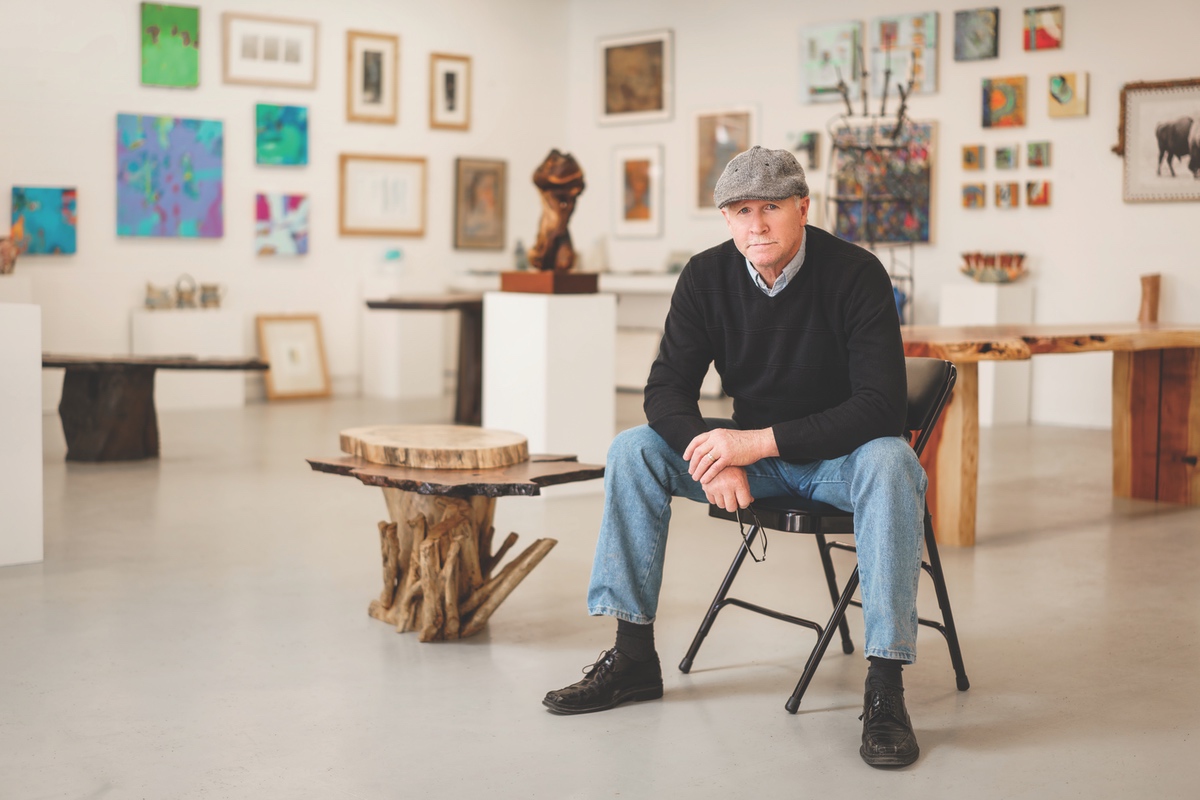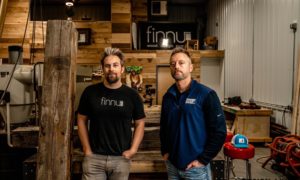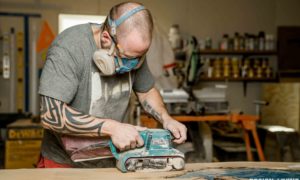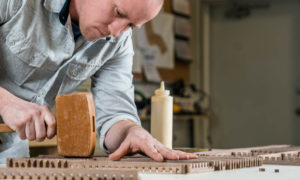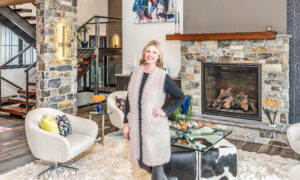Photos courtesy of Steve Revland
Steve Revland has been designing and building sculptural furniture for over 50 years. Revland’s work is perpetually evolving and taking on new meaning as he continually reinvents his process and three-dimensional art pieces. With a guiding principle to inspire joy upon entering a room, Revland describes his work process, from ideation through execution.
Steve Revland is an artist in many respects. The sculptural furniture designer and builder has been an artist since he was a child, with beginnings as a musician before pursuing furniture design and construction.
Revland’s work is characterized by solid slab wood sculptural furniture pieces that balance functionality with artistic values, many of which are tables and chairs.
“Early on, I specialized in more traditional early American design in the ‘70s,” Revland said. “That progressed in the ‘80s into a more modern, contemporary style, with a Scandinavian twist. The design has morphed into simplicity and a more universally appealing style that the majority of the marketplace can enjoy.”
Today, Revland’s work comprises largely of pieces that feature a combination of solid wood and epoxy. The union of these materials creates an illusion reminiscent of a bird’s-eye view of a shoreline, the live-edge of the wood representing the organic formation of fjords on a Scandinavian landscape and the deep blue epoxy depicting the northern waters.
“I’ve always had to reinvent myself over the years,” Revland said.
Beginnings
Revland’s career began in 1969 with his high school woodshop class. What he initially took as an easy course to get credit for graduation turned out to be a blessing in disguise.
“That’s when the light bulb was turned on in my head,” Revland said. “That’s when I said, ‘I really dig this.’”
In the late ‘70s, Revland discovered the story of his great grandfather Isaac Strinden. Strinden, a shipbuilder from Städ, Norway, immigrated to Minnesota following the Civil War and began hand hewing lumber into floors and furnishings. Revland carries on the tradition of his ancestors, sculpting wood into functional and beautiful forms.
While he still gleans inspiration from his heritage and the carpentry of his ancestors, Revland’s confidence has risen to the point where he can create the work he wants to, to construct his vision of a functional built environment with artistic value.
The Wood
“I lean toward wood species of color, which would be the exotics from Costa Rica, Mexico, Brazil,” Revland said. “The closer you get to the equator, the more colorful the wood species.”
Revland’s pieces are largely constructed from monkey pod, parota and mango wood imported from countries near the equator. The wood of these trees is so rich in color that Revland opts out of the staining process in favor of featuring the natural coloring of the woods.

The rise of the internet as a bridging tool across the planet has had a tremendous impact on Revland’s work. After being limited to native woods like oak, maple, birch and ash, Revland now had access to the exotic, colorful woods of Central America. Revland has put significant effort into developing strong relationships with these suppliers, and in turn, the world has opened up for him.
“They have become like family to me,” Revland said of his lumber suppliers. “That was very important as I developed these relationships with suppliers, from Costa Rica, Guatemala, Brazil or Mexico, you have to become friends with them so what they send you is the good stuff. That was something that worked really hard at, making certain these folks became like family.”
The lumber purveyors Revland works with must harvest their trees responsibly and sustainably. He is selective about the purveyors he works with in order to promote the continued health of forests well into the future. The wood he uses comes from diseased or fallen trees or from a forest that needs thinning. Many of these exotic trees, like mango and monkeypod, grow very fast and close together, so the health of the trees is dependent on occasionally thinning the forest.

The Furniture
“Furniture can be sculptural, but still be functional,” Revland said. “Every piece I make has to have an artistic value to it.” Revland utilizes sculptural furniture as a tangible art form that observers can directly interact with. The tactile nature of furniture allows for a direct connection between artist and observer.
“They’re something that you can walk in a room and go, ‘Hmm, that makes me feel good.’ That’s the whole key behind anything I design,” Revland said. “I want to make people feel good when they walk in the room. That’s what art is all about.”
Most of Revland’s chairs aren’t sitting chairs, but sculptural pieces intended to inspire conversation and connection among individuals. The Revland Signature Chair was designed in 1988. Described as a sculptural conversation piece, the chair’s high slatted back fans upward to capture natural light and creates configurations of shadows that are a work of art in themselves. This limited edition chair was featured on HGTV’s “Modern Masters” in 1999 and Revland has recently revived the series with a newly revised Signature Chair.
The Strinden Hill Chair has a live-edge high back that narrows as it rises. Revland seamlessly unites sleek, modern design with the organic elements of the natural world with the Strinden Hill Chair, originally designed in 1984.
A more recent addition to Revland’s portfolio are pieces that introduce an eco-friendly epoxy into the mix. Some of his pieces are tables with blue epoxy streams running down the center that Revland manipulates to create waves and swirls. Other tables of his are burls encased in a translucent black epoxy. Revland is continually experimenting with the epoxy, never ceasing to learn new techniques and applications for the material and lumber.
“My tools are like my best friends,” Revland said. “My table saw, my bandsaw, I’ve become so close to them, because they could take your finger off in a second if you don’t treat them with respect. And I fully intend on keeping my fingers.”
Revland averages one piece a week, about 50 pieces a year. In just the last six years he has made and sold over 300 tables and chairs. Looking back on his career, Revland estimates he’s made 2,000 pieces of furniture.
Importance of Art
One of the major driving factors of Revland’s work is enriching people’s lives through art. It is evident through viewing Revland’s work the care, precision and heart that goes into each piece. Every piece is informed as much by Revland’s past as it is by the community.
“What a cool gig,” Revland remarked. “It’s been a process, trust me first 10 years were no picnic, but it’s like the snowball that you roll down the top of the hill. By the time it gets to the bottom it’s turned into a large ball of snow. That’s how my career has evolved.”
In 50 years, Revland has built an impressive portfolio of thousands of pieces, no doubt bringing joy into thousands of homes. With no plans of stopping, Revland’s next goal is hitting the 75-year mark. There is a bright excitement in his voice as he talks about what designs and pieces the future may hold.
“I just feel like I’m getting going, and I look forward to it,” Revland said. “If it means another reinvention at the age of 75, I’ll do that.”
Revland’s pieces are on display and sold at:
Dakota Fine Art
11 8th St. S., Fargo
www.steverevland.com/
[email protected]

